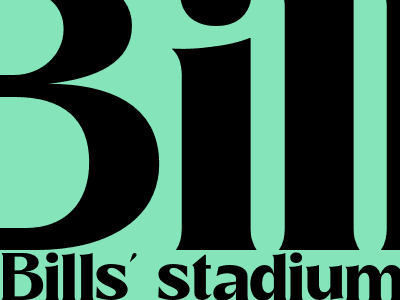
Bills' stadium cost mushrooms to $2.1 billion
No end in sight for taxpayer-funded stadium expansions
The Buffalo Bills’ new stadium is now projected to cost $2.1 billion, up from the original estimate of $1.4 billion. The increase is due to a number of factors, including inflation, supply chain issues, and design changes. The stadium is now expected to open in 2026, one year later than originally planned.
The Bills are responsible for $550 million of the project cost, with the remaining $1.55 billion coming from taxpayers. The stadium will be built on the site of the Bills’ current home, Highmark Stadium, which will be demolished.
The new stadium will feature a seating capacity of 62,000, making it the fifth-largest NFL stadium. It will also feature a retractable roof, a state-of-the-art video board, and a variety of other amenities.
Stadium costs continue to rise
The Bills’ stadium is just one example of the rising cost of sports stadiums. In recent years, several other NFL teams have built new stadiums, and the costs have been astronomical.
For example, the Los Angeles Rams’ new stadium, SoFi Stadium, cost $5.5 billion to build. The San Francisco 49ers’ new stadium, Levi’s Stadium, cost $1.3 billion to build.
The rising cost of stadiums is a major concern for taxpayers. In many cases, taxpayers are on the hook for a large portion of the cost, and they often do not see a direct benefit from the new stadium.
Is there a better way?
There is a growing movement to find a better way to finance sports stadiums. Some advocates believe that teams should be responsible for the entire cost of their stadiums, while others believe that taxpayers should not be involved in stadium financing at all.
There is no easy answer to the question of how to finance sports stadiums. However, it is clear that the current system is not sustainable. Taxpayers are increasingly being asked to foot the bill for new stadiums, and they are not always getting a good return on their investment.
Conclusion
The Bills’ new stadium is a reminder of the rising cost of sports stadiums. Taxpayers are increasingly being asked to foot the bill for new stadiums, and they are not always getting a good return on their investment. There is a growing movement to find a better way to finance sports stadiums, but there is no easy answer.